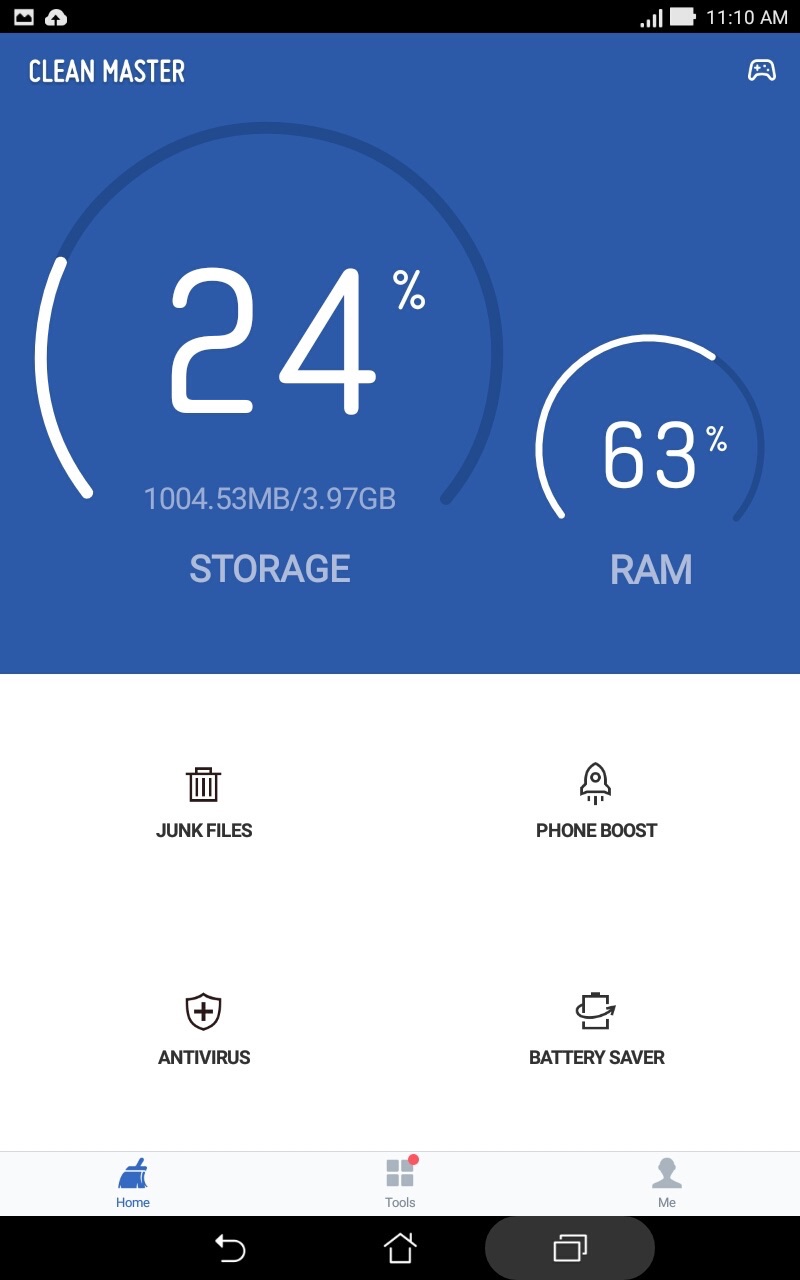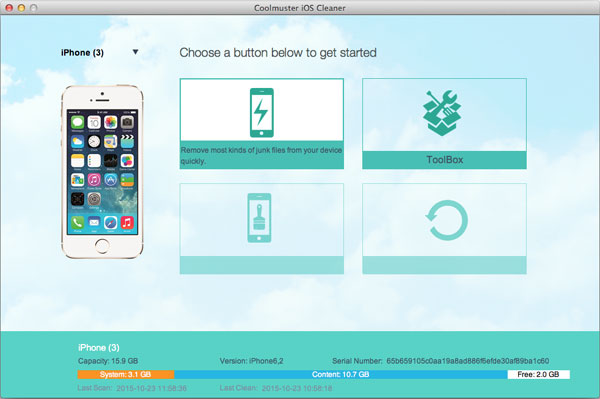How To Clean Junk Files On Mac For Free
Empty Recycle Bin. When you want to know how to clean junk files on a Mac properly, you should. How to find and get rid of temporary files in 'Other' on Mac. Open Finder and select Go Go to Folder from the menu bar. Type in /Library. Look for Application Support. Application Support is a system folder that contains temporary files. The MobileSync folder, for instance, contains old device backups. Optimizer for Mac Fire up the app, do a scan, and see it remove the clutter that’s slowing you down. Does a spring clean: The Junk File Cleaner deletes unnecessary files and browser junk. The Duplicate Finder clears copies of photos and other files. How to clean junk files on MacBook Pro? Junk files are equally responsible for making your MacBook Pro slow as other factors. So if you want to gear up your MacBook Pro performance, cleaning of junk files is very effective option for you. Below, we have discussed some pints that will help you in clearing junk data from your laptop.
- Free Mac Cleanup Software
- How To Clean Junk Files On Mac
- Clean My Mac System Junk
- Mac Junk Cleaner
- How To Clean Junk Files On Mac For Free Without
For optimizing your Mac OS performance, you can select user cache files, download files, system cache files, user logs, language files, and Xcode junk files, and run the scan. It would help if you opened Cleanmymac and hit the clean button whenever you find any performance issue or slowness on your MAC computer system or a laptop.
- 'Should I clear cache on Mac?'
- 'I am new to Mac Air. And I would like to know how to clear temporary files, cache and cookies…'

- 'Is it safe to delete everything in caches folder?'
You may be notified of 'Your disk is almost full. Save space by optimizing storage' on Mac. Well, it is a common question for most Mac users, especially for people who have installed lots of programs. Generally speaking, too much junk files and caches can cause overheating and other problems on Mac. So it is a good habit to delete temporary files on Mac regularly. And it will cause no data loss on Mac if you do as the following steps show.
Part 1. Where Is the Temporary Folder
Well, you can do nothing if you do not know the Mac temporary files location. But once you solve this problem, next time you can navigate the temporary folder to delete temporary files Mac terminal directly.

Step 1: Access the Terminal application
Open 'Finder' window and choose 'Applications' in the left panel. Later, double click on 'Utilities' icon. Well, you can also click 'Go' on the top of your screen, and then choose 'Utilities' to locate the Terminal application.
Step 2: Find the temporary folder on Mac
Type 'open/tmp' in the search field of the Terminal application. Be aware that you do not need to type quotation marks. When you press 'Enter' key on your keyboard, you can navigate to the temporary folder successfully.
Now you can prepare to delete temporary files and clear cache on MacBook Air and other Mac computers in easy ways.
Part 2. How Do I Clear Temporary Files on Mac
You can delete temporary files, caches and logs on Mac easily. And there is no bad influence to your Mac operating system. Because those files can be rebuilt automatically next time you run the Mac computer. So just read and follow to delete temporary files on Mac and free up more storage space.
Step 1: Head to Caches folder
Run 'Finder' on your Mac. Click 'Go' on the top menu bar. Later, select 'Go to Folder…' from the drop-down 'Go' list. In addition, you can hold and press 'Shift', 'CMD' and 'G' at the same time to achieve the same goal as well. Enter '~/Library/Caches' in the popping-up window. Then click 'Go' to navigate to this folder.
Step 2: Delete temporary internet files on Mac
Choose any file in the 'Caches' folder. Then hold and press 'Command' and 'A' to select all caches. Of course, you can choose multiple caches manually as well. Right click and select 'Move to Trash' to delete temporary internet files Mac. At last, empty the trash.
Note: You can create a backup of the files you want to delete in the cloud.
Do not forget to empty the trash. Otherwise, your deleted temporary files still take up your limited storage space on Mac without notice. That's why some people complain that deleting temporary files do not work.
Part 3. How Do I Get Rid of Junk Files on My Mac Permanently

Actually, you do not need to delete temporary files and other junk files manually every day. Because Apeaksoft Mac Cleaner can help you remove junk files and monitor system performance effortlessly. And it is safe to delete Mac junk and sensitive files by using Mac Cleaner. All your deleted files are irrecoverable. So once you clean up Mac with this powerful program, you can erase your recent history completely and effectively.
What Can Mac Cleaner Do for You
- Delete temporary files on Mac, as well as duplicate files, uninstall apps and more.
- Monitor Mac system performance of disk utilization, battery status, memory usage and CPU usage.
- Shred the selected files to be irrecoverable.
- Manage all extensions on Mac including login, services and more.
- Clear Safari/Chrome/Firefox cookies, caches, downloads, etc.
Easy Steps to Delete Junk Files on Mac Permanently
Launch Mac Cleaner
Free download and install Mac Cleaner on your computer. Double click its icon to launch this program. Later, you can choose 'Scan' on the lower right corner of the 'System Status' page. As a result, Mac Cleaner can show you the latest condition of your Mac.
Delete Cache Mac
Click 'Clutter' in the left panel. Choose 'Scan' at the bottom to start to find all your system cache files. Wait for a while to complete the process. Later, choose 'Review' to access those scanned cache files. Mark before multiple caches, and then choose 'Clean' to clear cache on Mac.
Delete junk files
Choose 'Junk Files' under the 'Cleanup' section. Click 'Scan' to see how many junk files you have. When the scanning process ends, click 'Review' to move on. Later, choose and preview which one you want to delete. Then choose 'Clean' on the lower right corner to delete junk files on Mac.
Delete corrupted files
Find and click 'Large & Old Files' option. It can help you identify and clear corrupted and unnecessary large files. So click 'Scan' to start the process. Choose 'Review' to see all your detected large files. Click the small box before the certain file if you want. At last, click 'Clean' to delete corrupted files permanently.
Well, you can use Mac Cleaner to delete duplicate files and images easily as well. For people who want to delete secret files permanently and safely, its built-in shredder feature can satisfy your need. In a word, no matter which file you want to delete, Mac Cleaner can always offer the best result to you. So why do you still hesitate to delete temporary files on Mac with Mac Cleaner? Just free download it and have a try right now. You will not regret for your choice.
Follow @Lily Stark
August 07, 2018 12:00
Free Mac Cleanup Software
Sep 14, 2021 • Filed to: Recover Files • Proven solutions
Junk file from your devices with Windows, Mac, Android, or iPhone, keeps your space occupied and in most cases, it is about unwanted junk. Regardless of the type of junk files, they slow down the activity of your device. The cache of your browsers could have so many junk small files that you are wondering many times 'why my browser is opening so slow?'. The unwanted files could be temporary files, old program setup files, cached thumbnails, all stored on your device, computer, laptop, tablet, phone. You will be surprised to find out that junk files could occupy a lot of GB into your system.
Part 1How to delete junk files on Windows
To get rid of junk files from your Windows computer, use the tool Disk Cleanup included in the operating system. There you can delete all data that you do not need anymore, like temporary files, files from the recycle bin, and more.

How To Clean Junk Files On Mac
Follow these simple steps to clean junk files from Windows:
1. Open Disk Cleanup utility
Go to Start menu to search for Accessories and then System Tools. There you will find the Disk Cleanup utility. Click on it and you will delete all unwanted files.
2. Delete junk files
Select all files that you wish to delete and click on 'Delete Files'.
Part 2 How to delete junk files on Mac
Use the tool Disk Utility from your iOS Mac. It is very easy to find it in Applications. Just follow these steps:
1. Open Disk Utility
Go to Applications and look after Utilities. There you will find the tool Disk Utility. Also, you can find it through Spotlight. Tap Disk Utility and then First Aid.
2. Use First Air / Erase
To do a proper cleanup, you can verify the disk permissions. In any case, the Disk Utility will clean up, and erase your junk files from Mac.
Part 3 How to delete junk files on Android
Your Android device has several junk files due to the apps (even after you uninstall them), in your browser's cache, and a lot of files like pictures that you don't need anymore. To clean up the junk files from your Android device, go to Settings, General, and Storage. On the Storage space, you will see all your total space and the space size used for your Apps, Pictures, Audio, Downloads, Cached data. If you wish to clear the junk files, tap on every feature and you will be prompted with the option to clear the data.
Part 4 How to delete junk files on iPhone
Your iPhone could have a lot of junk files in the Safari's cache, or even unwanted files remained from apps.
Follow the steps below to clean up the junk files from your iPhone:
1) Delete data stored by apps
You can delete the data stored by apps with the Usage option from Setting by following these steps:
Go to the Settings and search for General usage. After, tap Manage Storage and tap items from Documents and Data. Check items that you do not want anymore and tap Delete. To remove all app's data, tap Edit and then, Delete All.
2) Delete the cache from the browser Safari

The memory cache of your browser has certainly some files, as websites let cockies in your browser to give you a better experience at the next visits. Follow the steps below to clean up Safari's cache:
1. Search Safari under Settings
Clean My Mac System Junk
Tap Settings on your iPhone and search for Safari. Next, tap Clear History and Website Data. The final step is to tap Clear History and Data.
2. Clear Safari`s cache, cookies
If you agree on accepting cookies, you will have a lot of cookies into your browser. You can delete them now, properly.
Mac Junk Cleaner
Rescue & Fix Files
How To Clean Junk Files On Mac For Free Without
- Recover Document Files
- Repair Document Files
- Recover & Repair More
- Clear & Delete File